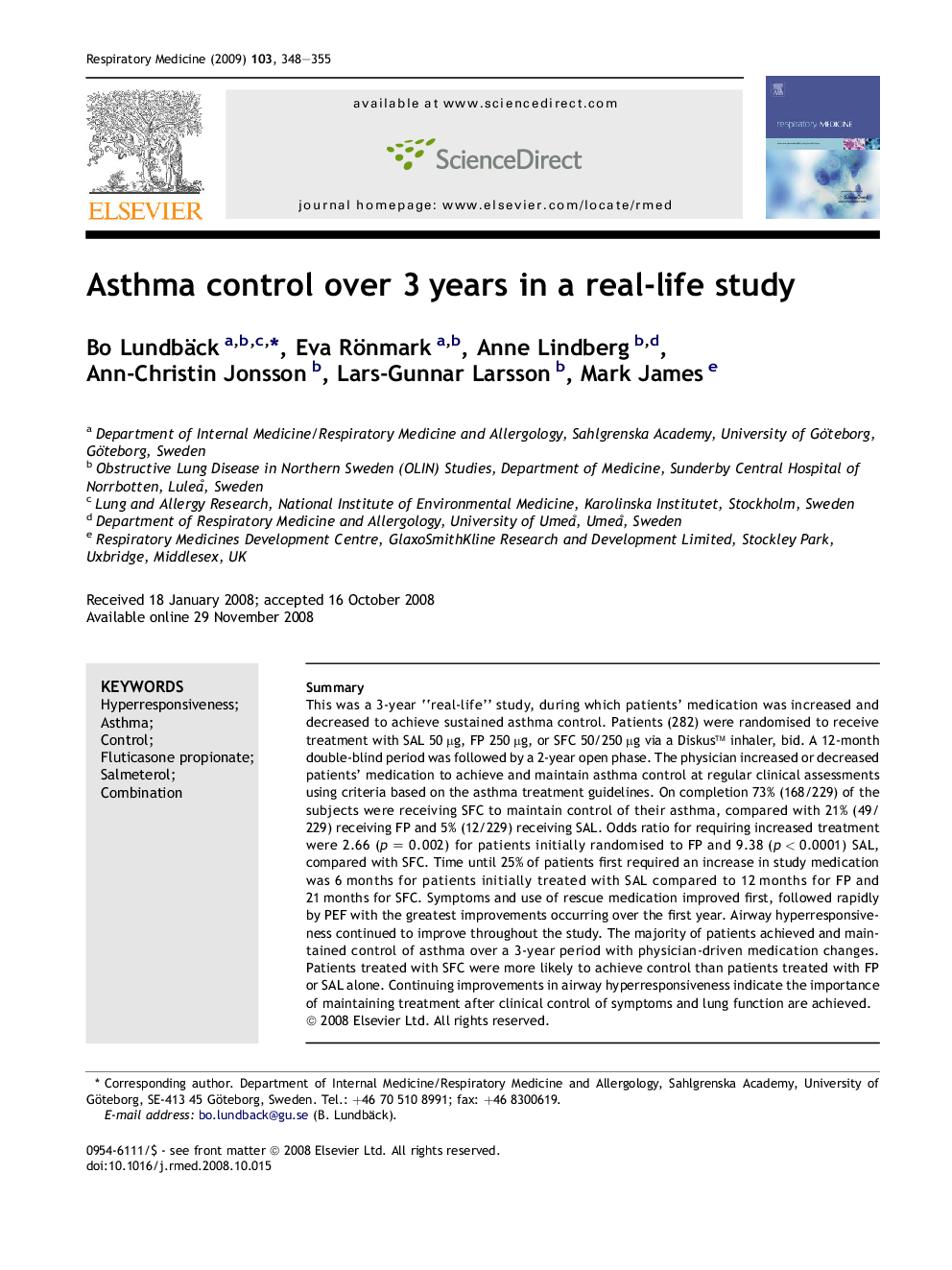| Article ID | Journal | Published Year | Pages | File Type |
|---|---|---|---|---|
| 4211146 | Respiratory Medicine | 2009 | 8 Pages |
SummaryThis was a 3-year “real-life” study, during which patients' medication was increased and decreased to achieve sustained asthma control. Patients (282) were randomised to receive treatment with SAL 50 μg, FP 250 μg, or SFC 50/250 μg via a Diskus™ inhaler, bid. A 12-month double-blind period was followed by a 2-year open phase. The physician increased or decreased patients’ medication to achieve and maintain asthma control at regular clinical assessments using criteria based on the asthma treatment guidelines. On completion 73% (168/229) of the subjects were receiving SFC to maintain control of their asthma, compared with 21% (49/229) receiving FP and 5% (12/229) receiving SAL. Odds ratio for requiring increased treatment were 2.66 (p = 0.002) for patients initially randomised to FP and 9.38 (p < 0.0001) SAL, compared with SFC. Time until 25% of patients first required an increase in study medication was 6 months for patients initially treated with SAL compared to 12 months for FP and 21 months for SFC. Symptoms and use of rescue medication improved first, followed rapidly by PEF with the greatest improvements occurring over the first year. Airway hyperresponsiveness continued to improve throughout the study. The majority of patients achieved and maintained control of asthma over a 3-year period with physician-driven medication changes. Patients treated with SFC were more likely to achieve control than patients treated with FP or SAL alone. Continuing improvements in airway hyperresponsiveness indicate the importance of maintaining treatment after clinical control of symptoms and lung function are achieved.
